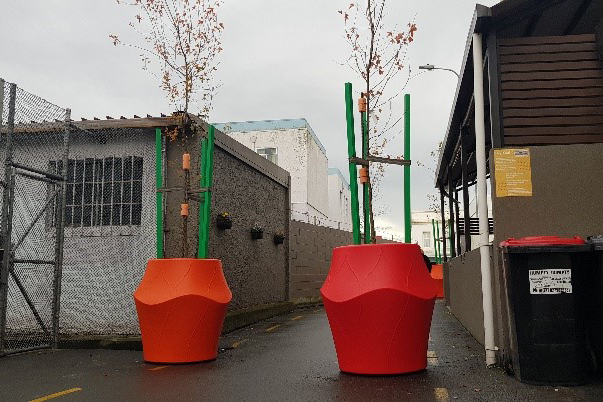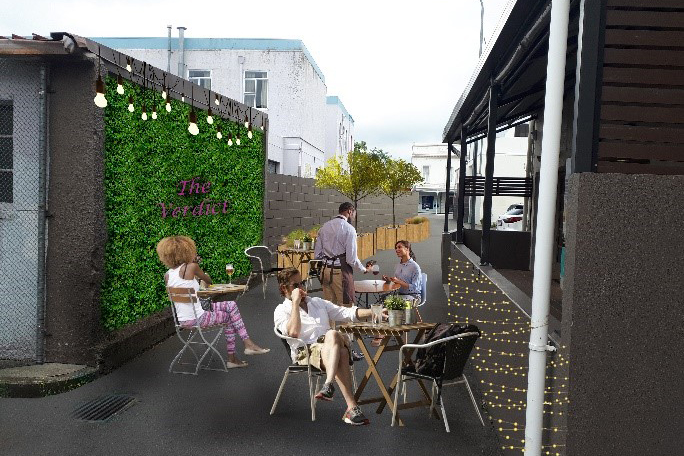Maple Lane is a narrow lane between Main Street and Church Street in Palmerston North which provides access to a café and to the back of several businesses. Though many pedestrians and cyclists commute along the lane, they are often pushed aside by vehicles using it as a rat-run at speed. Palmerston North City Council (PNCC) is developing a laneways manual in line with its vision to design public spaces that are pedestrian-friendly, intimate, and that support social interaction outlined in the City Centre and Placemaking Plans. Trialling ways to make Maple Lane more people-oriented could therefore contribute supporting evidence for the future manual.
PNCC ran a trial to close Maple Lane from through vehicle traffic on a Monday in May 2019 during which:
The project was designed using the '24-hour' rule: to be able to remove the planters within 24 hours of installation if substantial problems arose. A landscape architecture student was engaged to create a series of visualisations of the laneway to stimulate discussion of future layouts, which were posted on social media. The engagement plan involved ‘consulting by doing’ to separate out what issues really occur from those that people expect.

Maple Lane trial planters. Credit: Palmerston North City Council.

Visualisation of layout option. Credit: Palmerston North City Council.
The main consultation findings were:
Consulting only those directly affected was considered effective, as it meant actual realised issues could be identified and addressed, and preferences around convenience or ‘what if’ type risks did not overshadow the trial. Most vehicle users adjusted easily to the changes, including waste vehicles and taxis.
Key issues identified included:
PNCC has since bolted the planters to the ground as part of a semi-permanent installation which will inform similar trials in five other laneways. The planters will be maintained for at least two years in order to be flexible and responsive to changes in nearby building developments.